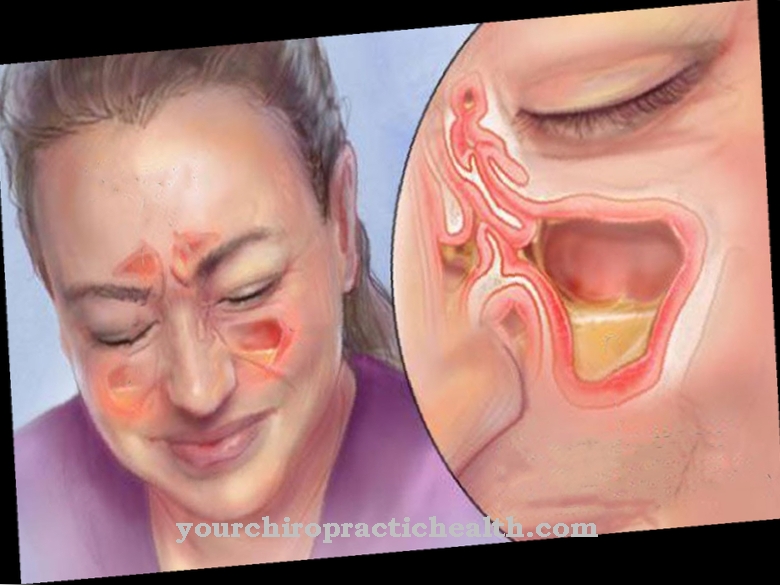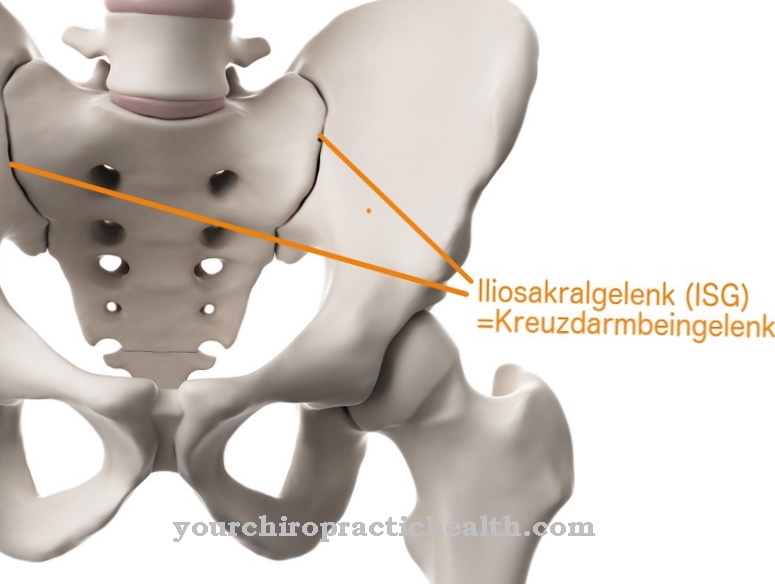The human nose is not only an important aesthetic component of the face. It also houses one of our oldest senses in terms of evolution. It is also used for vital breathing and acts as an “outpost” of the body's defense against infection.
What is the nose

As with all vertebrates, it is also with humans nose characterized by the presence of the nostrils and nasal cavity. It lies in the center of the human face and thus has a significant influence on facial aesthetics.
But even more important than its optical function is its task as an “entrance and exit” for the respiratory flow. So that it can get in and out of the body, the nasal cavity is connected to the trachea via the pharynx.
Not visible from the outside, there are also body cells in the nose for exercising the sense of smell. This has an effect on human behavior both in combination with the sense of taste and when evaluating pheromonic messages.
Anatomy & structure
Externally, the nose Divide from top to bottom into the bridge of the nose, the bridge of the nose, the two lateral nostrils and finally the tip of the nose. The nostrils enclose the nostrils that lead into the inside of the nose.
The front part of the nostrils is called the nasal vestibule and is lined with a hairy outer skin. The adjoining nasal cavity is divided into two areas by the so-called nasal septum. Both are lined with a mucous membrane and a ciliated epithelium with tiny cilia. The right and left nasal cavities are structured by partially bony turbinates.
In the upper area of the nasal cavities there are special sensory fields, called olfactory bulbs. They contain a large number of olfactory cells that react with fragrances from the air we breathe. The resulting stimuli are conducted into the brain via nerve fibers in the olfactory tract.
The paranasal sinuses also branch off from the nasal cavities. These are air-filled protrusions in the nasal mucosa that are believed to reduce the weight of the skull.
Functions & tasks
The main function of the nose The opening is to be shown through which the breathing air can flow into the body and the stale air can flow out again. This is generally also possible through the mouth, but only when it is open. The mouth as the sole breathing organ would therefore not allow breathing while eating or drinking.
The air inhaled through the nose is first heated and moistened. On the one hand, this benefits the lungs, which threaten to cramp in very cold air. On the other hand, this pretreatment supports an evaluation of the fragrance molecules contained in the air.
The air we breathe is also purified by the fact that the nasal hairs and the cilia of the nasal mucous membrane hold back foreign particles. If the nasal hairs are too dirty, the sneeze reflex is triggered to clear foreign bodies from the nose.
If the inhaled, warmed air then reaches the upper area of the nasal cavity, the nose can exercise its function as a sensory organ. When eating, the perception of smell is combined with the perception of taste in the mouth and thus offers a complete representation of the properties of the food consumed.
At the same time, pheromones, i.e. other people's sexual messengers, are also perceived from the air we breathe. Although reactions to this are not as obvious in humans as in animals, instinctive likes and dislikes towards other people, for example, are said to be at least partly due to pheromonal effects.
Illnesses
The best known symptoms of the nose is the runny nose, medical rhinitis, which is an acute or chronic inflammation of the nasal mucous membrane. It reacts to this by swelling, which can severely hinder nasal breathing. Often there is also the production of thin to viscous nasal secretions. Itching and sneezing can also occur.
The causes of rhinitis can be a bacterial or viral infection or an allergic symptoms. Seasonal rhinitis is also known as hay fever, because grass pollen is often the cause of allergies. Year-round complaints are generally due to a house dust mite, animal hair or mold allergy. In addition, allergic rhinitis can also occur because of work, for example as a reaction to vapors from paint or varnish.
A purely organic health problem of the nose is the curvature of the nasal septum (septum deviation), congenital or acquired through injury. Although around 80% of all people have a slightly inclined septum, this does not generally lead to impairments. Free nasal breathing is only no longer guaranteed if the curvature is severe. In addition, the narrowed nasal cavity represents an increased risk of infection.
The nosebleed (epistaxis) usually shows a temporary symptom. A vessel in the anterior nasal septum almost always ruptures due to inflammatory, physical, or chemical damage. Only with persistent, uncontrollable bleeding, which often comes from the back of the nose, is there a greater health risk.
The nasal furuncle and the rhinophyma represent external symptoms of the nose. The former is a painful, deep inflammation of a hair follicle. The rhinophyma, the "cauliflower nose", is a bulbous nasal growth in rosacea in adults, which is worsened by the consumption of tea, coffee or alcohol.
You can find your medication here
➔ Medicines for colds and nasal congestionTypical & common diseases
- Stuffy nose
- Nasal polyps
- Sinus infection













.jpg)

.jpg)
.jpg)











.jpg)